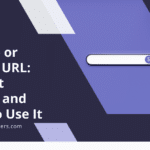
|
Getting your Trinity Audio player ready... |
Dropshipping is a retail fulfillment method where a store doesn’t keep the products it sells in stock. Instead, when a store sells a product using the dropshipping model, it purchases the item from a third party and has it shipped directly to the customer. As a result, the seller doesn’t have to handle the product directly.
Shopify is an e-commerce platform that facilitates dropshipping operations. It provides users with tools to create and manage online stores, including customizable templates and product management features. Shopify integrates with various dropshipping applications and suppliers, streamlining the process of finding products and automating order fulfillment.
Success in dropshipping via Shopify requires a thorough understanding of both the business model and the platform’s capabilities. Entrepreneurs should familiarize themselves with dropshipping principles and Shopify’s features to maximize their potential for success and minimize common challenges faced by new business owners in this field.
Key Takeaways
- Dropshipping with Shopify allows you to sell products without holding inventory or shipping items yourself
- Research and identify profitable niches and products with high demand and low competition for your Shopify store
- Optimize your Shopify store by creating a user-friendly design, clear product descriptions, and easy checkout process to maximize conversions
- Implement effective marketing strategies such as social media advertising, influencer partnerships, and email marketing to drive traffic and sales
- Streamline your order fulfillment process by working with reliable suppliers, automating order processing, and providing excellent customer service for increased efficiency
Finding Profitable Niches and Products for Your Shopify Store
Conducting Market Research and Analysis
One of the most crucial aspects of running a successful dropshipping business on Shopify is finding profitable niches and products to sell. With so many products available, it can be overwhelming to decide what to offer in your store. However, by conducting thorough market research and analysis, you can identify lucrative niches and products that have high demand and low competition.
Targeting Specific Demographics or Interests
When looking for profitable niches, consider targeting specific demographics or interests. For example, instead of selling general fitness equipment, you could focus on yoga enthusiasts or outdoor adventurers. By narrowing down your target audience, you can better tailor your marketing efforts and product offerings to meet their specific needs and preferences.
Selecting Products with a Proven Track Record
In addition to finding profitable niches, it’s crucial to select products that have a proven track record of selling well. Look for products with high profit margins, low shipping costs, and a strong potential for repeat purchases. You can use tools like Google Trends, Amazon Best Sellers, and social media platforms to gauge the popularity of certain products and identify emerging trends.
By taking the time to research and identify profitable niches and products for your Shopify store, you can position yourself for success and avoid wasting time and resources on products that may not resonate with your target audience.
Optimizing Your Shopify Store for Maximum Conversions

Once you’ve identified profitable niches and products for your Shopify store, it’s important to optimize your website for maximum conversions. This means creating a user-friendly and visually appealing storefront that encourages visitors to make a purchase. Start by choosing a clean and professional theme for your Shopify store.
Your theme should reflect your brand’s identity and make it easy for visitors to navigate your site and find what they’re looking for. Consider using high-quality images and compelling product descriptions to showcase your products and entice visitors to buy. In addition to aesthetics, it’s important to optimize your site for speed and mobile responsiveness.
With more people shopping on their mobile devices than ever before, it’s crucial that your site looks and performs well on all devices. Use Shopify’s built-in tools and apps to optimize your site’s loading times and ensure a seamless shopping experience for all visitors. Furthermore, consider implementing trust signals such as customer reviews, security badges, and a clear return policy to build trust with potential customers.
By creating a sense of credibility and reliability, you can increase the likelihood of visitors making a purchase from your store. By optimizing your Shopify store for maximum conversions, you can improve the overall shopping experience for your customers and increase your chances of turning visitors into paying customers.
Implementing Effective Marketing Strategies for Your Dropshipping Business
| Marketing Strategy | Metrics |
|---|---|
| Social Media Marketing | Engagement rate, Reach, Click-through rate |
| Content Marketing | Website traffic, Time on page, Conversion rate |
| Influencer Marketing | Number of collaborations, Follower growth, Engagement |
| Email Marketing | Open rate, Click-through rate, Conversion rate |
| Search Engine Optimization (SEO) | Organic traffic, Keyword rankings, Backlink quality |
In order to drive traffic and sales to your Shopify dropshipping store, it’s essential to implement effective marketing strategies. With so many online businesses vying for attention, it’s important to stand out from the competition and reach your target audience in meaningful ways. One effective marketing strategy for dropshipping businesses is influencer marketing.
By partnering with influencers in your niche, you can reach a larger audience and build credibility with potential customers. Look for influencers who align with your brand values and have an engaged following to maximize the impact of your influencer marketing efforts. Another powerful marketing strategy is content marketing.
By creating valuable and relevant content such as blog posts, videos, or infographics, you can attract organic traffic to your site and establish yourself as an authority in your niche. Share your content on social media platforms and engage with your audience to build a loyal following over time. Additionally, consider investing in paid advertising through platforms like Facebook Ads or Google AdWords.
With targeted advertising, you can reach potential customers based on their demographics, interests, and online behavior, increasing the likelihood of converting them into buyers. By implementing effective marketing strategies for your dropshipping business, you can increase brand awareness, drive traffic to your Shopify store, and ultimately boost sales and revenue.
Streamlining Your Order Fulfillment Process for Increased Efficiency
As a dropshipping business owner, it’s important to streamline your order fulfillment process for increased efficiency. With orders coming in from customers around the world, it’s crucial to have a system in place that allows you to fulfill orders quickly and accurately. One way to streamline your order fulfillment process is by leveraging automation tools and software.
Many dropshipping apps integrate with Shopify to automate order processing, inventory management, and shipment tracking. By automating repetitive tasks, you can save time and reduce the risk of human error in the fulfillment process. Furthermore, consider establishing strong relationships with reliable suppliers who can fulfill orders promptly and provide quality products.
By working closely with trusted suppliers, you can ensure that orders are fulfilled in a timely manner and that customers receive their purchases without any issues. In addition to automation and supplier relationships, it’s important to have clear communication channels with your customers. Provide them with tracking information and updates on their orders to keep them informed throughout the fulfillment process.
By offering transparency and excellent customer service, you can build trust with your customers and encourage repeat purchases in the future. By streamlining your order fulfillment process for increased efficiency, you can improve customer satisfaction and reduce the likelihood of fulfillment-related issues in your dropshipping business.
Leveraging Analytics and Data to Make Informed Business Decisions

Tracking Key Performance Indicators (KPIs)
To make informed business decisions for your Shopify dropshipping business, it’s crucial to leverage analytics and data. By tracking key performance indicators (KPIs) such as website traffic, conversion rates, and customer demographics, you can gain valuable insights that will help you optimize your store and marketing efforts. Start by using Google Analytics or Shopify’s built-in analytics tools to track these important metrics.
Understanding Customer Behavior
By understanding how visitors interact with your site, you can identify areas for improvement and make data-driven decisions to enhance the overall shopping experience. Furthermore, consider using customer relationship management (CRM) software to track customer interactions and purchase history. By understanding your customers’ preferences and buying habits, you can tailor your marketing efforts and product offerings to better meet their needs.
Monitoring Marketing Campaign Performance
In addition to tracking customer behavior, it’s important to monitor the performance of your marketing campaigns. Use A/B testing and other analytical tools to measure the effectiveness of different marketing strategies and make adjustments based on the data. By leveraging analytics and data to make informed business decisions, you can continuously improve your Shopify dropshipping business and stay ahead of the competition in a rapidly evolving e-commerce landscape.
Building Long-Term Success and Sustainability in Your Shopify Dropshipping Business
Finally, in order to build long-term success and sustainability in your Shopify dropshipping business, it’s important to focus on customer satisfaction and brand building. By providing exceptional customer service and delivering high-quality products, you can build a loyal customer base that will support your business for years to come. In addition to customer satisfaction, focus on building a strong brand identity that resonates with your target audience.
Develop a unique selling proposition (USP) that sets your store apart from competitors and creates a memorable brand experience for customers. Furthermore, consider diversifying your product offerings and expanding into new niches or markets over time. By staying adaptable and open to new opportunities, you can future-proof your business against changing consumer trends and market conditions.
Finally, prioritize continuous learning and improvement as an entrepreneur. Stay informed about industry trends, best practices, and new technologies that can help you grow your business. By staying proactive and adaptable, you can position yourself for long-term success in the competitive world of e-commerce.
In conclusion, dropshipping with Shopify offers entrepreneurs an accessible way to start an online business without the need for holding inventory or managing fulfillment processes. By understanding the basics of dropshipping with Shopify, finding profitable niches and products, optimizing your store for conversions, implementing effective marketing strategies, streamlining order fulfillment processes, leveraging analytics for informed decisions, and focusing on long-term success and sustainability, entrepreneurs can set themselves up for success in the world of e-commerce. With dedication, strategic planning, and continuous improvement, entrepreneurs can build thriving dropshipping businesses on Shopify that stand the test of time.
If you’re interested in learning more about the world of e-commerce, you might want to check out this article on an in-depth SEO action plan for medical practices. It offers valuable insights into how businesses can optimize their online presence to attract more customers and improve their search engine rankings. This kind of knowledge can be incredibly useful for anyone looking to start a Shopify dropshipping business and maximize their online visibility.
FAQs
What is Shopify dropshipping?
Shopify dropshipping is a business model where a store doesn’t keep the products it sells in stock. Instead, when a store sells a product, it purchases the item from a third party and has it shipped directly to the customer.
How does Shopify dropshipping work?
With Shopify dropshipping, the store owner selects products from a supplier and adds them to their online store. When a customer purchases a product, the store owner then buys the item from the supplier, who ships it directly to the customer.
What are the benefits of Shopify dropshipping?
Some benefits of Shopify dropshipping include low startup costs, the ability to sell a wide variety of products without holding inventory, and the flexibility to run the business from anywhere with an internet connection.
What are the challenges of Shopify dropshipping?
Challenges of Shopify dropshipping can include finding reliable suppliers, managing inventory and order fulfillment, and dealing with potential shipping delays or quality control issues.
Is Shopify dropshipping profitable?
Shopify dropshipping can be profitable, but success depends on factors such as product selection, marketing strategies, and customer service. It’s important to carefully research and plan before starting a Shopify dropshipping business.
Can anyone start a Shopify dropshipping business?
Yes, anyone can start a Shopify dropshipping business. However, it’s important to understand the business model, research the market, and develop a solid business plan before getting started.























































